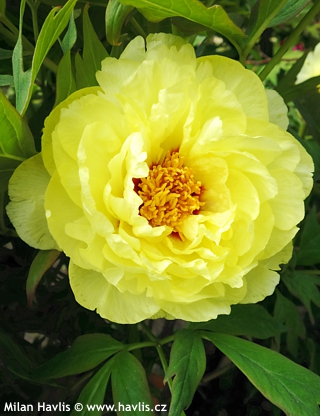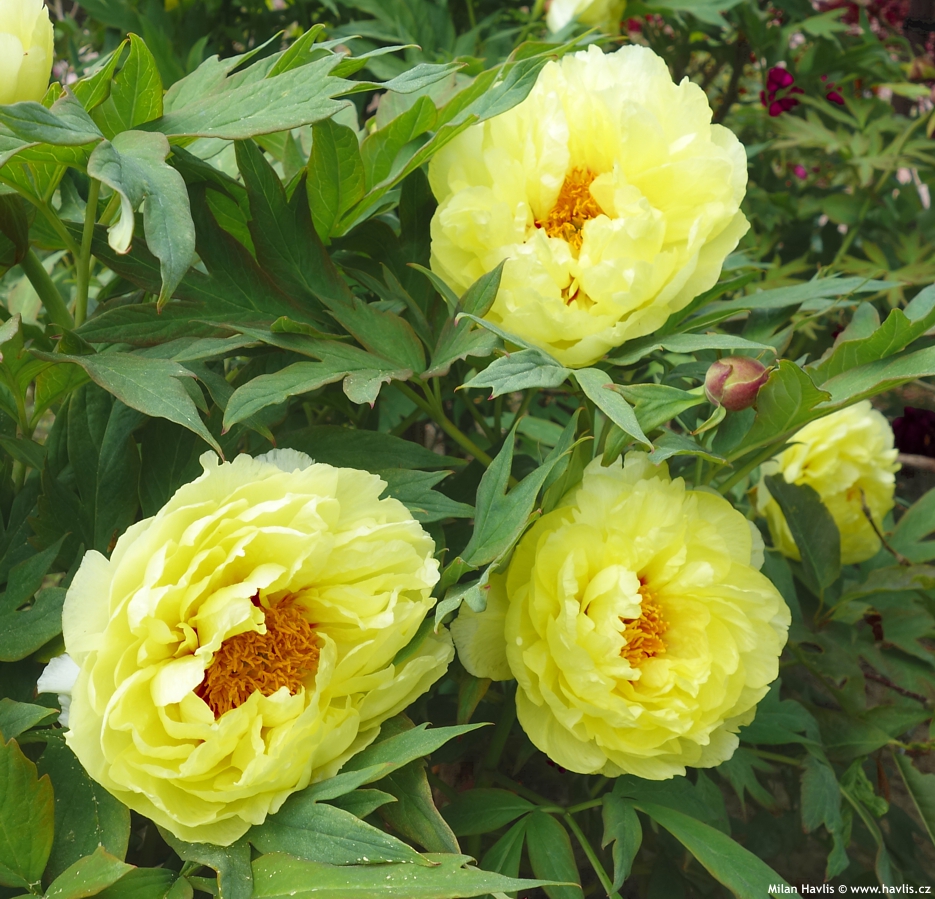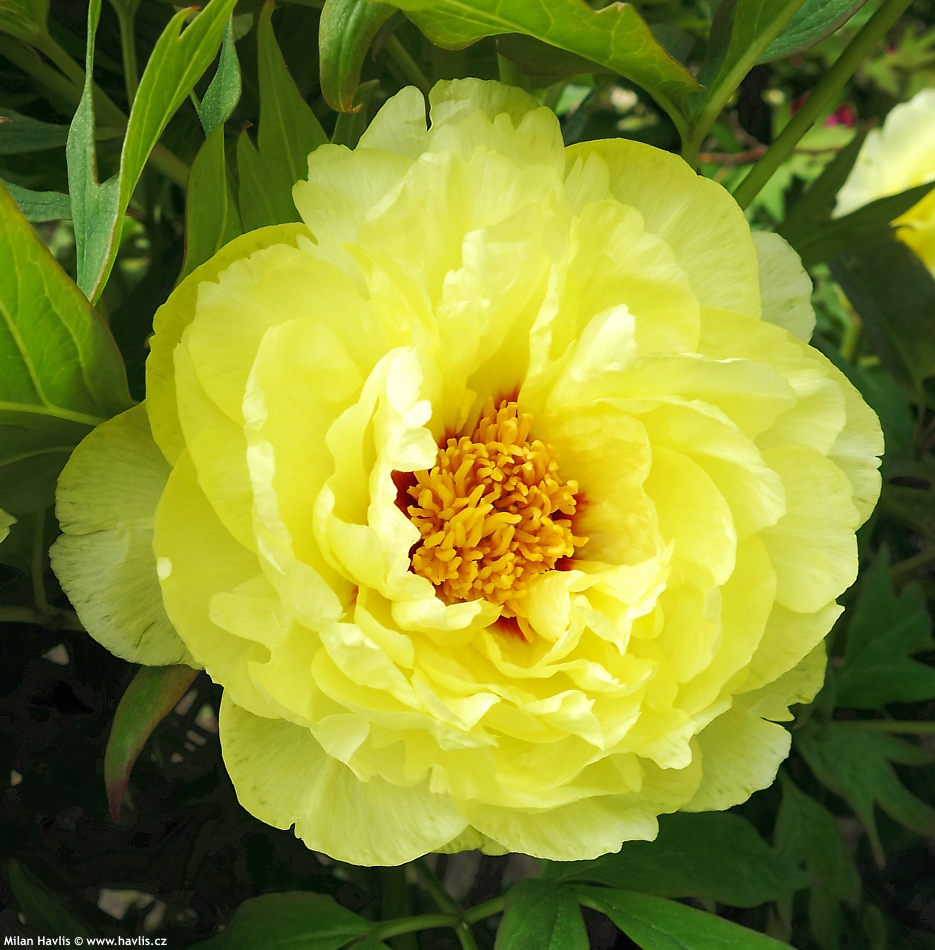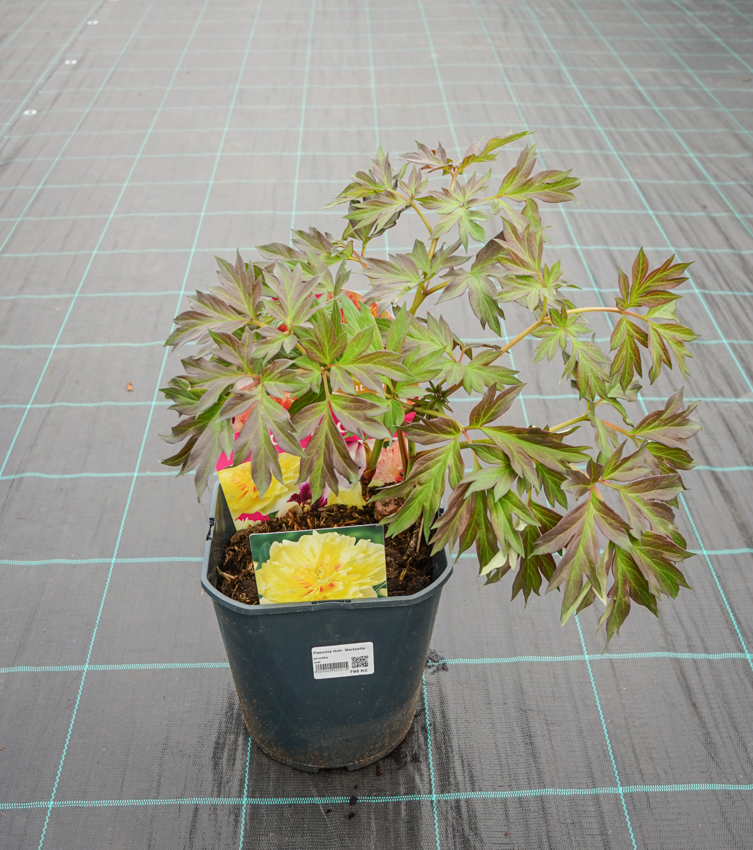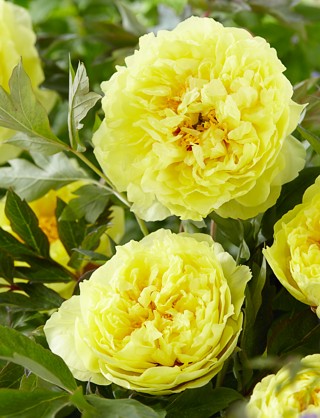Paeonia itoh 'BARTZELLA' Itoh peony
Paeonia
Intersectional peony, now called paeonia itoh, was first bred by a Japanese nurseryman Toichi Itoh who in 1948 managed to cross paeonia x lemoinei (hybrid tree peony) with paeonia lactiflora ‘Kakoden’ (perennial peony). Out of 36 plants 9 seedlings turned out different – perennial habit with tree peony appearance. Sadly he died soon after (in 1956) and did not get to see any of his seedlings flower. His achievement was not forgotten only thanks to an American horticulturist Louis Smirnow who in 1960’s got a permission from Itoh’s widow to patent Itoh’s seedlingsin order to continue with his breeding work and make new varieties and subsequent crosses. One of the first commercially known and successful varieties was Bartzella raised by Roger Anderson in 1980’s, and since these peonies could only be propagated by vegetative divisions there were very few mother plants available. Yet the demand was so high that in late 1990’s the price of one Bartzella division reached 1,000 US dollars. Luckily soon after a new micropropagation method was found which brought more plants and more crosses at lower costs, yet its price remains quite substantial compared to any other perennial still in 2010’s.
Bartzella is considered the very first yellow flowering itoh peony. It produces rich, warm yellow flowers whose petals have a scarlet red flame at its base which gives the flower a feeling of a deeper colour. They are fully double and fragrant. They appear later than tree peony flowers but before the perennial type ones i.e. from about mid May until mid June. Their stems are tall enough to make a great cut flower, and if the whole plant is hard pruned after flowering to the ground level it re-grows and could make another flush of a few flowers in midsummer. Itoh peony grows moderately fast, forming a bushy clump with numerous flowers pretty soon. This peony is also beautiful thanks to its highly decorative foliage. The leaves are deciduous, large, deeply lobed, dark green with purple red hues in summer, and turning yellow, orange, and scarlet and burgundy red in autumn.
Itoh peony will grow in a range of well-drained, fertile soils, of neutral to slightly acidic pH. Given even moisture and plenty of sun it will be healthy and beautiful year by year. Make sure it gets enough of fresh air in order to avoid fungi diseases that love congested environment. It is a long-lived perennial. Hardy to min. -29°C (USDA zone 5), possibly a few degrees lower.
Last update 09-07-2020
Goods are shipped all over Europe. For Russia and U.K. and for further details please read about SHIPPING OPTIONS HERE.
Are you interested in a serious discount for orders NOV-FEB? Check your options here.
THE PRICES INCLUDE VAT of 15%. For quick conversion you can use 1 CZK = approx. 0.04 EUR
- STANDARD QUALITY - Plants of this group are 1st class quality with number of branches and overall density adequate to their size and age, considering they were container grown.
- DE LUXE QUALITY - This label guarantees a luxurious quality of manually selected plants that, compared to their height and age, are exceptionally dense and beautiful.
- EXTRA - These plants are usually mature and bigger specimens with exceptional overall appearance.
- STANDARD (as described in the plant form) means a tree with a trunk of 190-210 cm and a crown at the top, unless specified differently. The commercial size for trees is their girth measured in the height of 1m from ground.
- HOBBY - These plants are of the same quality as our standard-quality plants but younger and therefore cheaper.
- SHRUB - a woody plant with branches growing bushy from the ground level.
- HALF-STANDARD or MINI-STANDARD - a small tree with shorter trunk, its size is usually specified.
- FEATHERED - These are trees with branches growing already from the base of the trunk and up along the stem.
- GRASSES and PERENNIALS - Sizes given usually read the diameter of the pot or the clump, as specified.

































